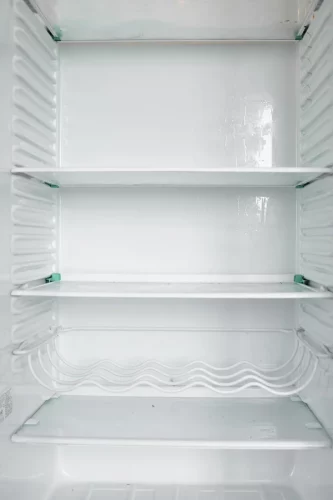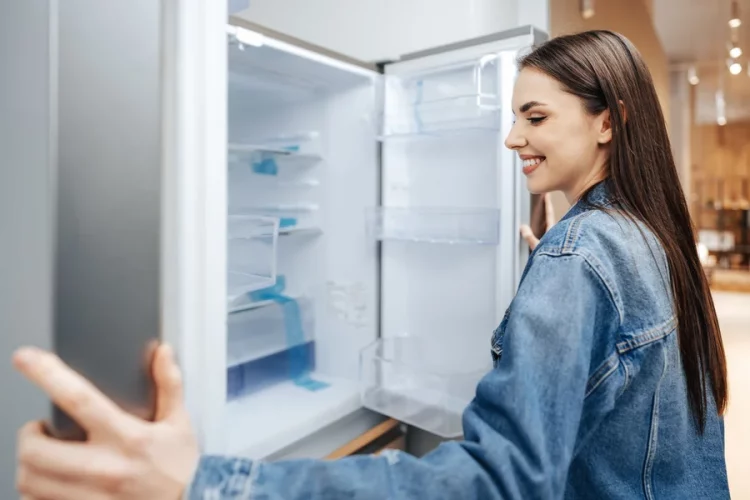A refrigerator leaking water is one of the most common — and frustrating — kitchen surprises. You might spot a puddle on the floor, find water inside your fridge drawers, or notice mysterious drips from underneath. While it can feel alarming, most leaks have straightforward causes and many can be fixed at home without special tools.
Leaks can damage your floors, encourage mold growth, and spoil your food if left unchecked. In this guide, we’ll break down why your refrigerator might be leaking water, how to troubleshoot and fix it step by step, and when it’s time to call a professional appliance repair service.
What causes a refrigerator to leak?
Several common issues can cause water to pool under or inside your fridge:
- Clogged defrost drain — Ice or debris blocks the drain tube, causing water to overflow into the fridge or onto the floor.
- Frozen or kinked water supply line — Often happens with ice-maker or water-dispenser models.
- Cracked or overflowing drain pan — The pan beneath your fridge catches condensation, but cracks or overflow can lead to leaks.
- Loose or leaking water filter — Improper installation or using the wrong filter model can cause drips.
- Faulty door gasket — A worn or dirty seal allows warm air in, causing excess condensation inside.
- Improper leveling — If your fridge isn’t slightly tilted backward, water might not flow to the drain as intended.

Understanding the source of your fridge leaking water is the first step toward a safe and easy fix.
Step-by-step troubleshooting guide
Step 1: Unplug the Fridge & Protect the Floor
Safety first! Always unplug your refrigerator before inspecting or cleaning it. Place towels or a shallow tray around the base to catch any spills.
Step 2: Check the Defrost Drain
A clogged defrost drain is one of the most common reasons for water leaks.
- Look for a small hole or channel inside your freezer or fridge section (usually at the back or bottom).
- If it looks frozen or clogged with debris, flush it using warm water and a turkey baster or squeeze bottle.
- Gently remove visible ice with a soft tool (avoid sharp objects to prevent damage).
Step 3: Inspect the Water Supply Line
This line usually connects to the back of the fridge to feed the ice maker and water dispenser.
- Move the fridge away from the wall carefully.
- Check for kinks, bends, or signs of ice buildup.
- If frozen, you can gently thaw using warm towels.
- If cracked or damaged, it may need to be replaced.
Step 4: Examine the Drain Pan
All refrigerators have a drain pan underneath that collects condensation.
- Slide the pan out (usually accessible from the front or back panel).
- Look for cracks or signs of overflow.
- Clean the pan with warm, soapy water and ensure it’s placed back properly.
Step 5: Check the Water Filter & Housing
A loose or incompatible water filter can cause leaks.
- Remove and inspect your water filter — make sure it’s seated correctly and is the right type for your model.
- Replace any damaged O-rings or seals.
- If in doubt, refer to your refrigerator manual or manufacturer’s website.
Step 6: Look at the Door Seal (Gasket)
The door gasket keeps cold air inside and prevents moisture buildup.
- Inspect for tears, mold, or gaps.
- Clean it with mild soap and water.
- Perform the dollar-bill test: Close the door on a dollar bill. If it slides out easily, the seal may need to be replaced.
Step 7: Level the Refrigerator
A properly leveled fridge should tilt slightly backward.
- Adjust the front legs (usually done with a wrench or screwdriver).
- Check with a level — if it’s leaning forward, water might not drain correctly.
- Re-check door closure after adjusting.

Brand-specific issues
Samsung Fridge Leaking Water from Bottom
Commonly linked to clogged defrost drains or ice buildup behind panels.
Whirlpool Fridge Leaking from Back
Often traced to loose water supply connections or cracked tubing.
LG Refrigerator Defrost Drain Clogged
This brand is known for narrower drain channels that clog easily.
GE Fridge Ice Maker Leaks
May leak into drawers if the fill tube freezes or if there’s a faulty ice maker valve.
For brand-specific issues, you can also visit the manufacturer’s support pages or manuals.
When to call a professional
You should contact an appliance repair technician if:
- You’ve tried all DIY steps and the fridge is still leaking water.
- The leak is coming from inside the door, control panel, or electrical components.
- Water keeps pooling overnight despite cleaning.
- You notice signs of electrical shorts, burning smells, or humming noises.
A certified pro can diagnose hidden issues, replace faulty parts safely, and protect your warranty.
Tips to prevent future leaks
Keep your fridge dry and working efficiently with these tips:
- Clean the defrost drain and condenser coils every 3–6 months.
- Replace the water filter every 6 months (or per your manual).
- Check door seals and level your fridge annually.
- Avoid overloading drawers or blocking air vents.
- Watch for puddles or a mildew smell as early warning signs.
Conclusion
A refrigerator leaking water is frustrating but often fixable with simple checks and cleaning. By following these steps, you can resolve most leaks yourself, protect your kitchen, and avoid costly repairs.
If the leak persists, or you see signs of deeper electrical or mechanical problems, don’t hesitate to call an appliance repair professional.
“Not sure or want help fast? Our local appliance repair experts are just a call away — schedule today and keep your kitchen running smoothly!”




